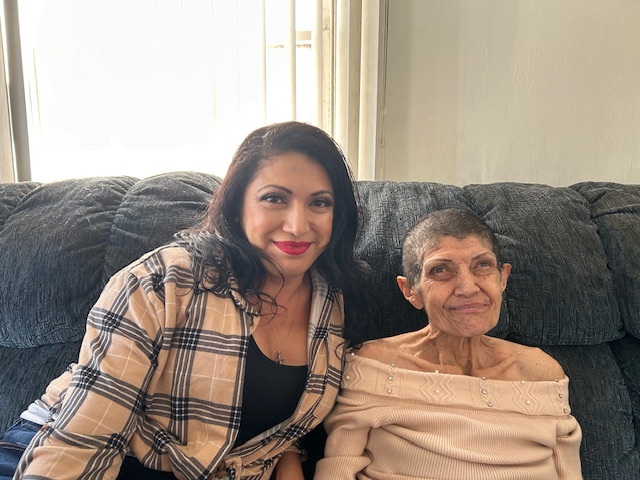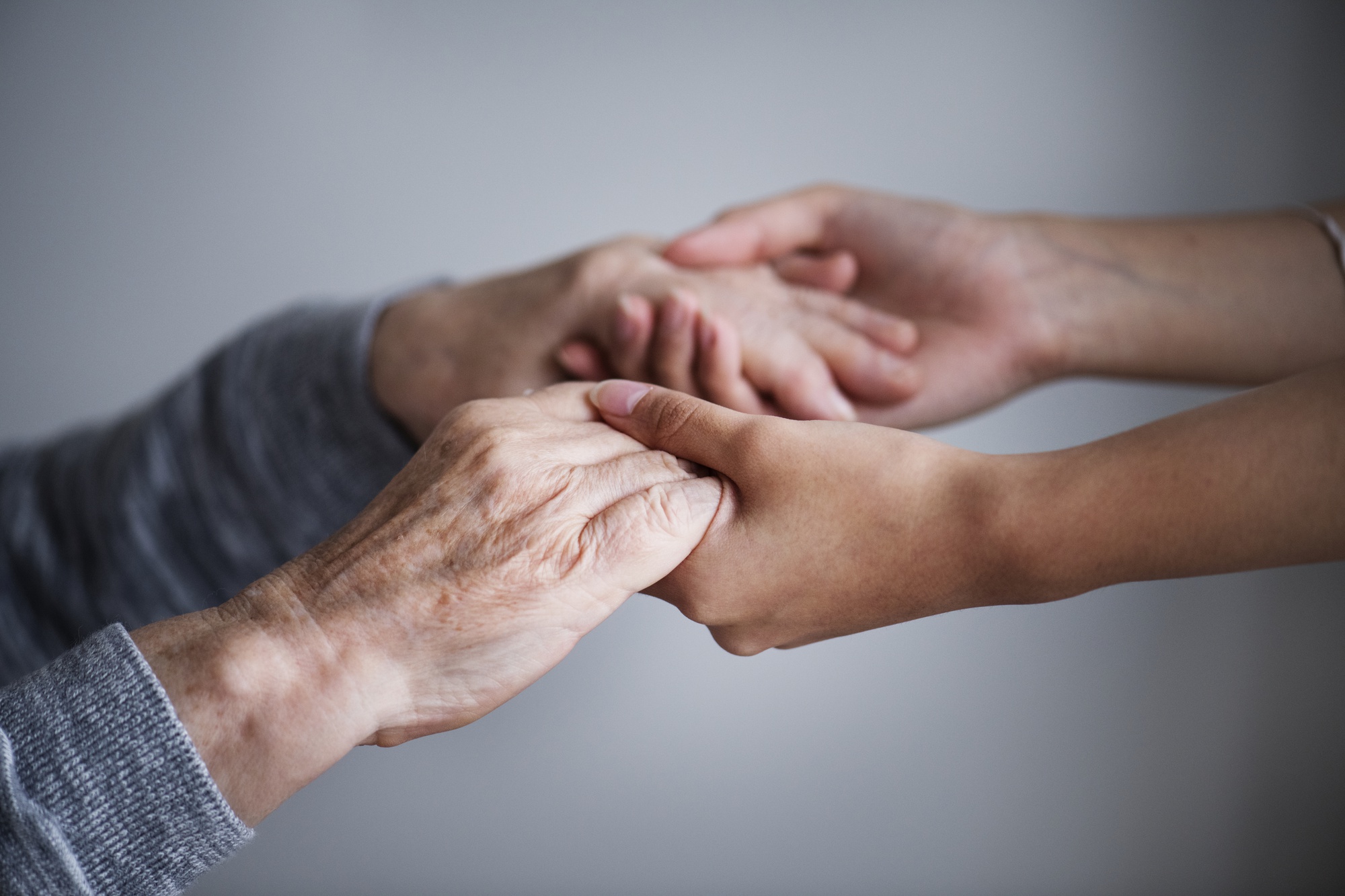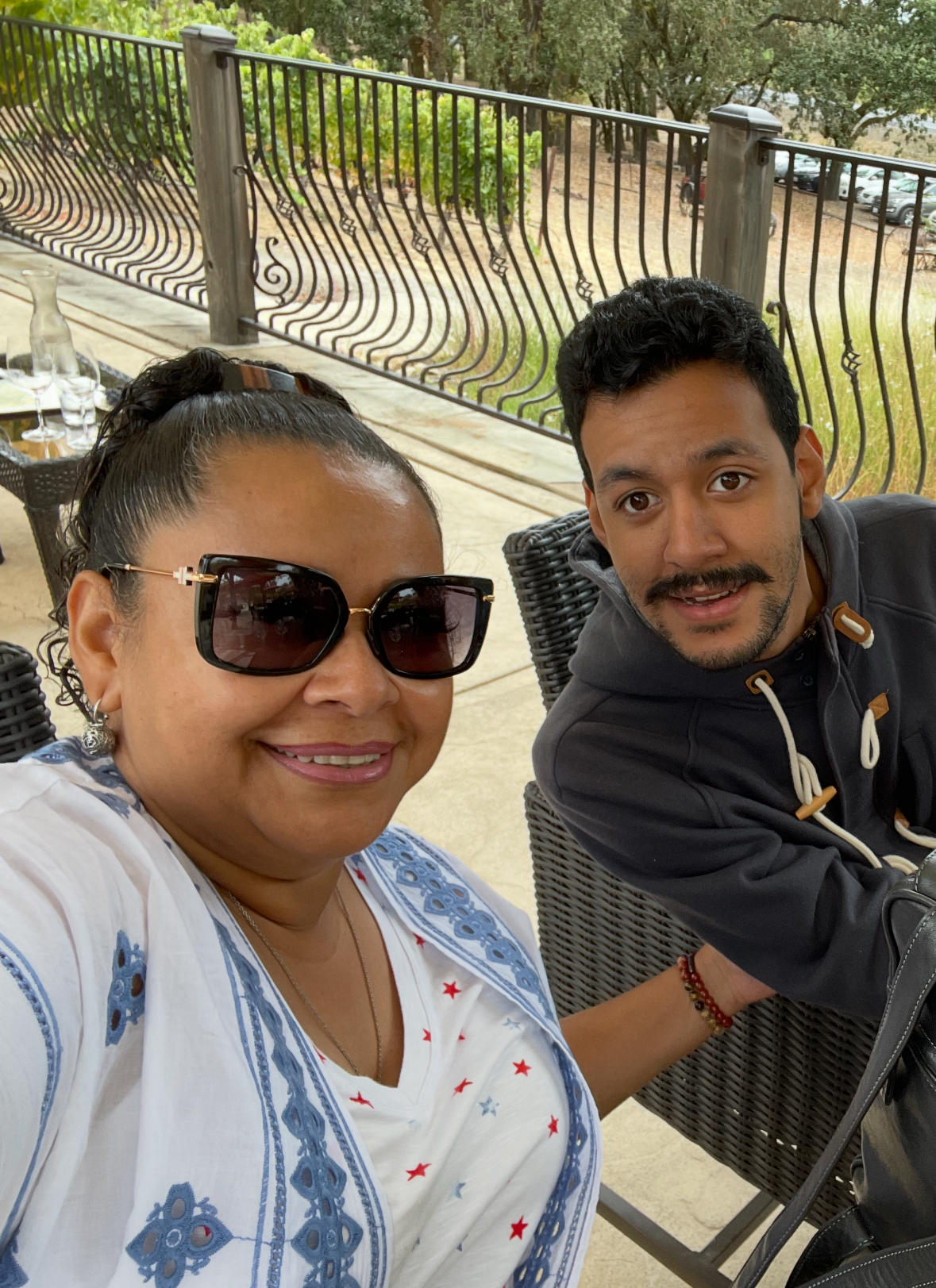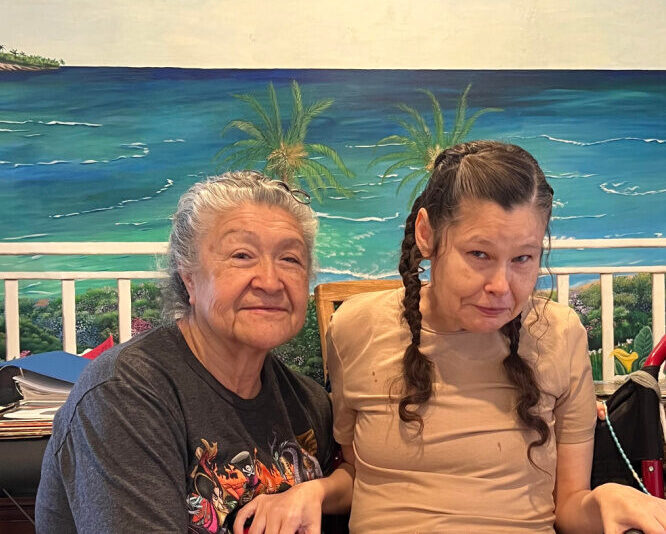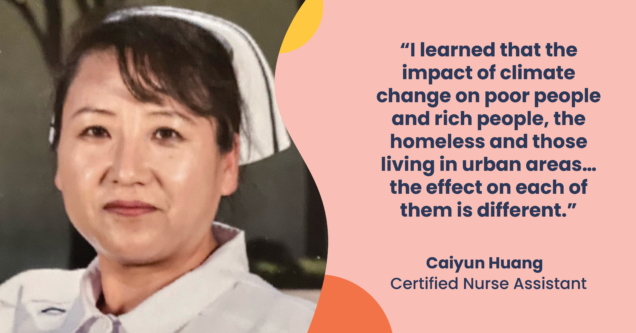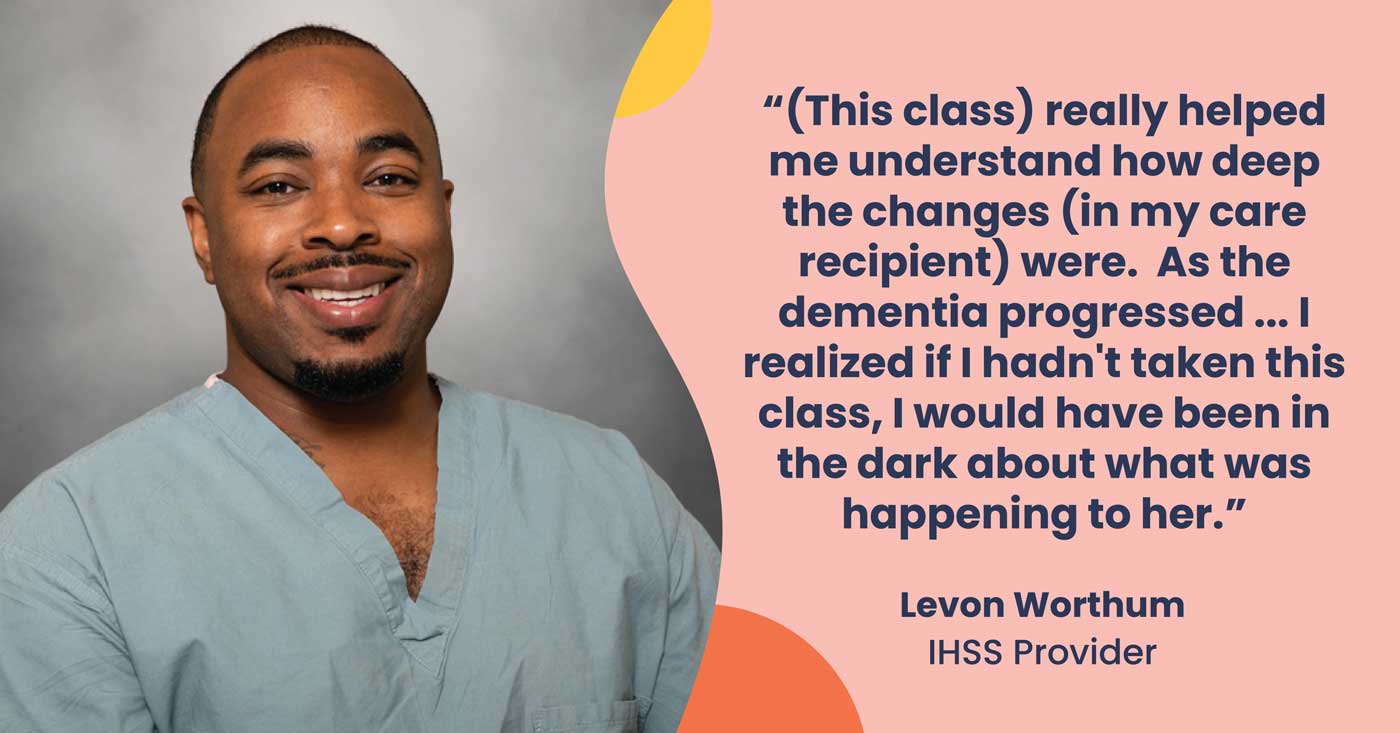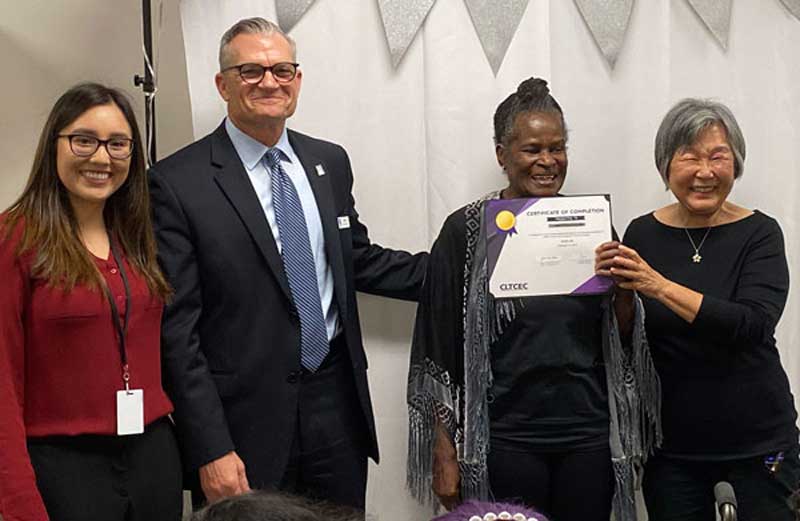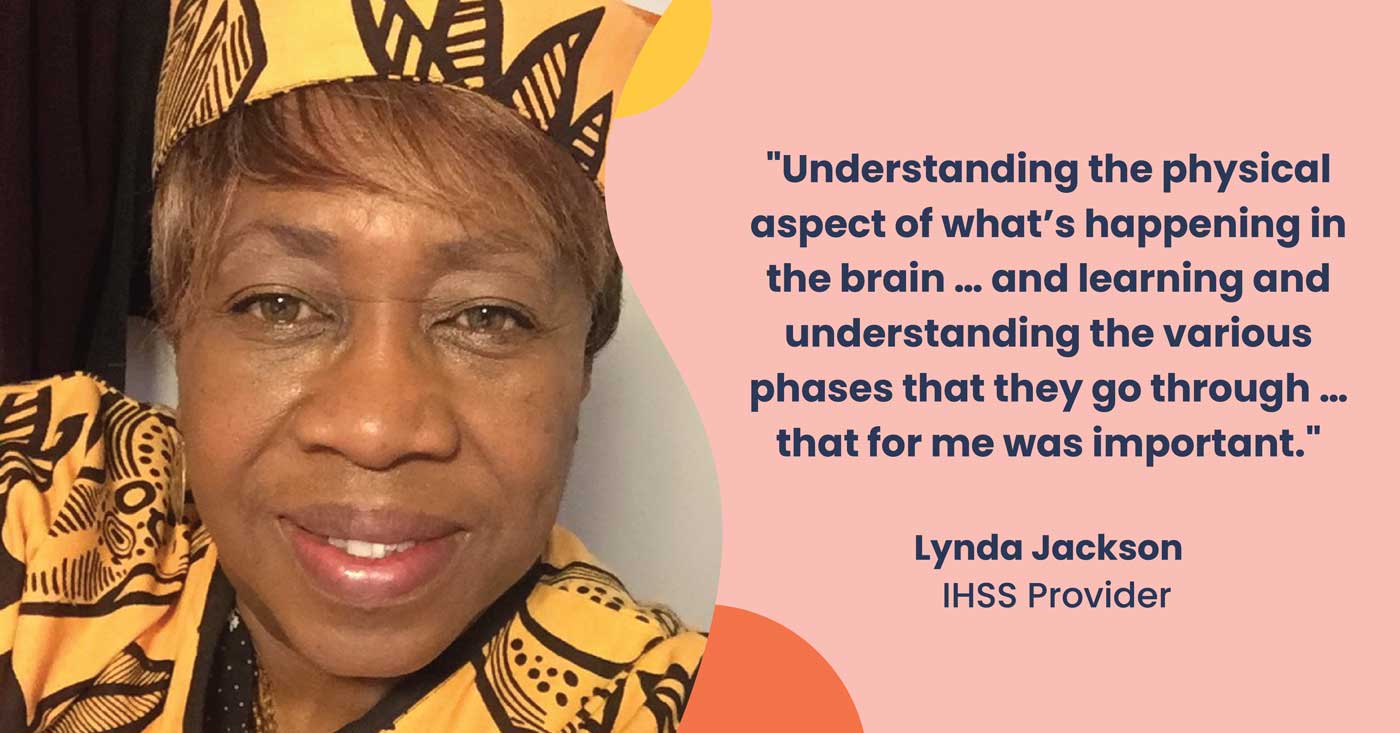For years Melissa Fernandez’s family struggled to find the correct diagnosis for the symptoms her mother was experiencing. When they were finally afforded clarity, they realized that the challenges ahead were significant. A myriad of chronic conditions surfaced that would affect Melissa’s mother’s daily life and severely limit her independence. Once a vocational nurse herself, Melissa’s mother would now need lots of healthcare support. Her mother’s health, coupled with her family’s own career paths in healthcare, steered Melissa toward becoming an In-Home Supportive Services (IHSS) provider.

“Just being able to help is a really rewarding feeling for me,” says Melissa. She is now the primary caregiver for her mother, who has been ill for most of Melissa’s life.
The complexities of her mother’s health conditions and the variety of medications she must take demand that Melissa be adept as a caregiver. And because of the IHSS+ training she received from the Center for Caregiver Advancement (CCA), she feels empowered and grateful to be able to take her mother’s care into her own hands.
“Thankfully because of this training program I’m able to care for her, and not worry about who’s going to care for her,” says Melissa.
Some of the skills included in CCA’s training are CPR, medication adherence, body mechanics, communication across the health care team, and nutrition. Melissa learned how to adapt her mother’s diet to something more appropriate for someone with diabetes.
“I took the training and I’m more educated on certain things such as meals and her diet,” says Melissa. “Now that I’ve taken the course, I try to cook healthier food for her. And I’ll eat it with her […], so I feel like we’ve become closer that way.”
The positive effect of the training is reverberating beyond the caregivers and those in their care. The impact on California’s overburdened healthcare system is measurable.
The largest publicly operated health plan in the nation, L.A. Care, is one of CCA’s partners in providing training to IHSS providers in Los Angeles County. According to an L.A. Care utilization report analyzing the impact of CCA’s training on its members, caregiver training results in a reduction in the number of emergency department visits by 42% and a 60% drop in hospitalizations, saving up to tens of thousands of dollars per consumer for insurers and the healthcare system.
Melissa’s own experience and training helped to familiarize her with her mother’s everyday symptoms and identify emergencies when they happen.
“She’s had a heart attack before … so it’s very challenging when she has to go to the hospital and she’s being cared for by someone else,” she says.
The training also helped Melissa and her mother adapt to new challenges presented by the Covid-19 pandemic, such as how to maintain her mother’s dental health while she was unable to visit the dentist and how to prevent the spread of infection.
But of the entire curriculum, the most valuable insights Melissa says she learned are ways to help preserve her mother’s sense of self. “We learned how to speak with [the people we care for] and … not make them feel like less of a person. When (my mother) can’t do things, like walk, that gets to her sometimes. I try to build up her character and self-esteem.”
Caregiver training allowed Melissa to take control of her mother’s health and equipped her with the knowledge to give her the highest standard of care. Without the caregiver training offered by CCA, Melissa, nor her mother, might not be so empowered, or independent.
“There are certain things people don’t realize you need to learn. […] There’s always room for learning, and I think anyone who’s caring for somebody, especially somebody who is sick, should have some sort of training.”





